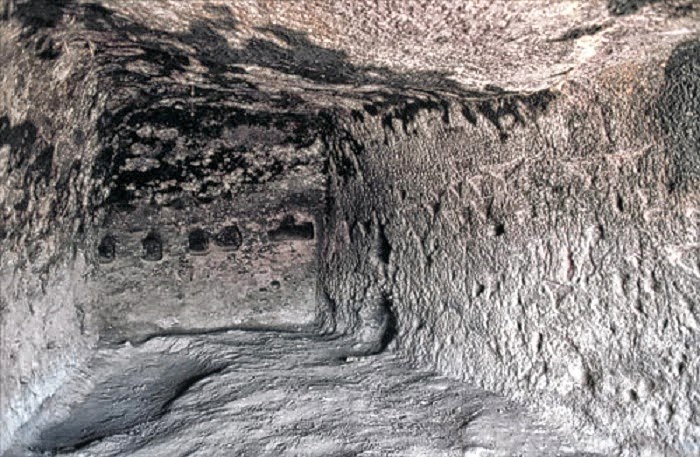Il fatto è stato studiato dagli anni '90: In una grotta
delle Canarie entra la luce del sole nascente, tra
marzo e settembre, dall'equinozio di primavera in
poi. Segna equinozi e solstizi e poi riproduce con
discreta precisione una serie d'immagini
chiaramente legate alla fertilità. Il luogo è
interpretato come un tempio dell'Età della Pietra e
come un luogo di osservazione astronomica.
E' indiscutibilmente bello favoleggiare sulle meravigliosamente avanzate conoscenze dei tempi andati.
Forse, anche qui si esagera un po' nell'attribuire precisi significati simbolici e formali alla luce del sole che entra nella grotta e soprattutto a considerarne gli effetti come deliberatamente voluti dagli autori, che avrebbero scavato man mano - nel corso dei lunghi mesi dell'anno - le loro forme. Senza possibilità di correggere gli eventuali errori, ma ottenendo un risultato finale ineccepibilmente chiaro e preciso.
Vengono in mente certi critici d'arte, che 'interpretano' i segni astratti di pittori (i quali solo dalla critica apprendono finalmente che cosa realmente essi intendessero ritrarre fin dall'inizio).
Spanish cave could hold origins of astronomy
A cave located on Spain’s Canary Islands, in what was probably the aboriginal region of Artevigua, could reveal an unsuspected knowledge of astronomy by the ancient islanders since it marks equinoxes and solstices, while inside it the light recreates images related to fertility.
Light from the rising sun enters the cave's 5-metre high dome room, from the spring equinox onwards and is visible inside for about two hours every day from March to September [Credit: Gran Canaria]
The cave was used as a temple and, besides its astronomical function, the light creates in its interior a mythological account of fertility, the likes of which exist nowhere else in the world,” archaeologist Julio Cuenca, who has investigated the area since the 1990s, said. “It’s like a projector of images from a vanished culture,” Cuenca told Efe, adding that during a six-month period the light creates phallic images on cave walls that are covered with engravings of female pubic triangles.
As the months go by, the projections of sunlight gradually cover the triangles, and as the summer solstice approaches and fall arrives, the images are transformed into that of a pregnant woman, and finally, into a seed, the archaeologist said.
Cuenca, who at the time was chief curator of the Canary Museum and a specialist in researching mountain sanctuaries of the ancient Canarians, discovered the cave while copying engravings in the nearby cave of Los Candiles in Artenara.
It was this region the archaeologist identified with ancient Artevigua, an important settlement of the earliest Canarians, whose place names disappeared in the 18th century, possibly due to the eagerness of the Catholic Church to Hispanicize place names used by previous inhabitants.
Source: Hispanically Speaking News [April 22, 2014]
Read more at: http://archaeologynewsnetwork.blogspot.it/2014/04/spanish-cave-could-hold-origins-of.html?utm_source=feedburner&utm_medium=email&utm_campaign=Feed:+TheArchaeologyNewsNetwork+(The+Archaeology+News+Network)#.U1i8Xih7DfU
Follow us: @ArchaeoNewsNet on Twitter | groups/thearchaeologynewsnetwork/ on Facebook
